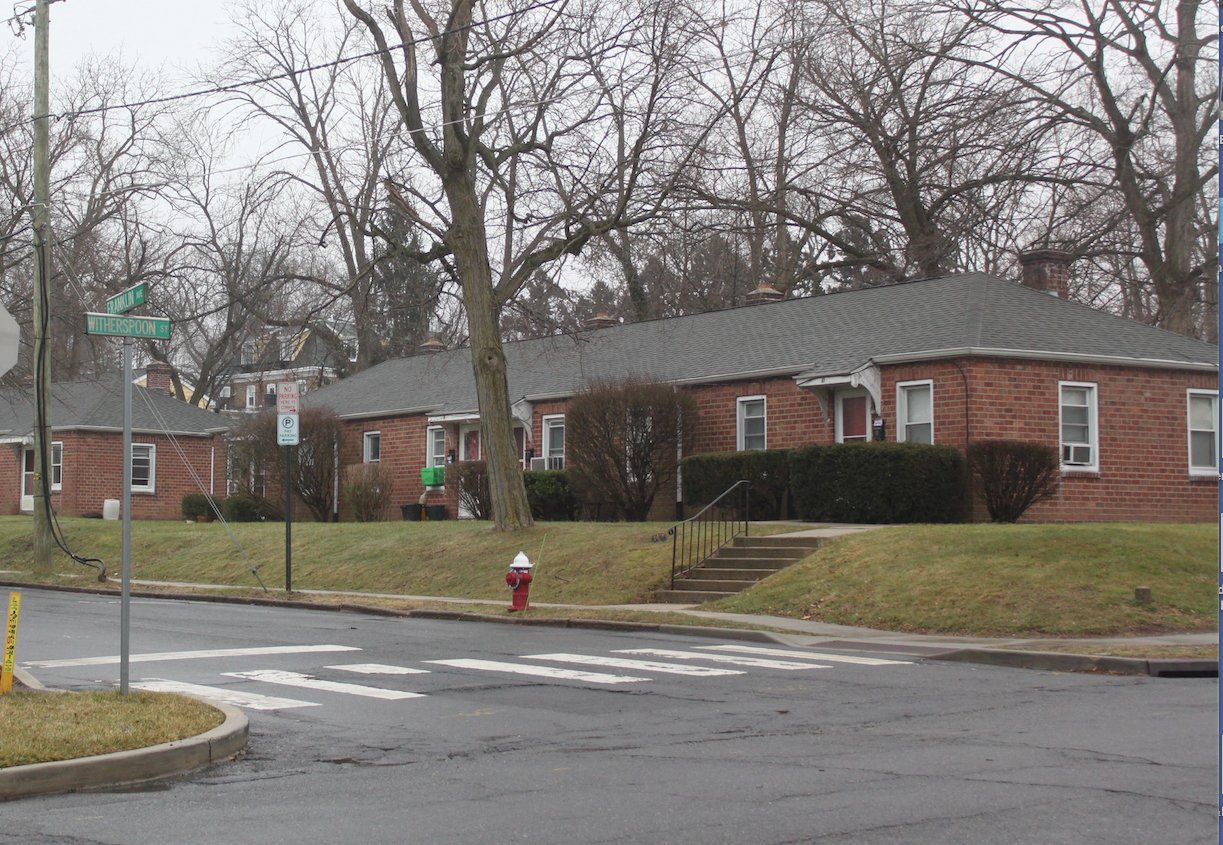The Princeton Planning Board has recommended that the Franklin Avenue parking lot and the Franklin Terrace and Maple Terrace rental housing developments should be declared an area in need of redevelopment.
The recommendation, which was made after a lengthy discussion at the Planning Board’s Oct. 7 meeting, will be sent on to the Princeton Council for action.
If the Princeton Council agrees, it could lead to the demolition of the two developments – which are managed by the Princeton Housing Authority – and the creation of as many as 160 rental apartments. They would be divided between affordable and market-rate units.
The potential redevelopment of the Franklin Avenue properties grew out of the town’s settlement with the Fair Share Housing Center, which sued Princeton – and many other towns – for failing to provide its fair share of affordable housing for low- and moderate-income households.
Heyer, Gruel & Associates was hired to conduct a study to determine whether the properties qualify as an an area in need of redevelopment. Planning consultant McKinley Mertz outlined the study’s results for the Planning Board.
Mertz, who visited the three properties, said they would qualify on the basis of criterion “d” of the state Local Housing and Redevelopment Law. It is one of eight criteria that can be used as the basis for declaring a property or properties as an area in need of redevelopment.
Criterion “d” applies to buildings that are dilapidated, obsolete, overcrowded, that have faulty arrangement or design, and that have a lack of ventilation, light and sanitary facilities. Excessive land use coverage, deleterious land use or an obsolete layout also are included in criterion “d.”
The parking lot, which was used by the former University Medical Center at Princeton, has about 200 parking spaces and is now municipally owned, Mertz said. It is obsolete because the hospital moved to Plainsboro Township several years go. It has been used on a temporary basis for additional parking for municipally-owned vehicles and for the Princeton Farmers Market.
“It has never been parked to 50% of its capacity. The pavement is in poor condition. It’s really just sitting there,” Mertz said.
The Franklin Terrace and Maple Terrace housing developments, which are managed by the Princeton Housing Authority, likewise are dilapidated and obsolete, Mertz said.
The Franklin Terrace development consists of three, white brick one-story buildings next to the parking lot and contains 10 rental units. It was built in the 1930s.
The Maple Terrace development, on the corner of Franklin Avenue and Witherspoon Street, is made up of three, red brick one-story buildings containing 10 rental apartments. It was built in the 1940s.
Each of the one- and two-bedroom units is 489 square feet, which is “incredibly small by modern standards,” Mertz said.
The New Jersey Housing and Mortgage Finance Agency, which provides funding for rehabilitation of such units, requires minimum standards to qualify for financing: 600 square feet for a one-bedroom apartment and 850 square feet for a two-bedroom unit. A studio or efficiency requires 550 square feet.
Mertz said there is a lack of laundry facilities in the units, and there are few electric outlets, especially in the kitchen. None of the units in the Franklin Terrace development are accessible to the physically handicapped and do not meet ADA standards.
Mertz said she toured two vacant units and observed crumbling and cracked ceilings and walls. The Princeton Housing Authority considered making improvements and updates, but “you can’t change the outdated design,” she said.
When the meeting was opened for public comments, several residents disagreed with the planner’s findings on the parking lot.
Hawthorne Avenue resident Alice Artzt asked where people would park, if the parking lot is included in any redevelopment scheme. She said the parking lot could be used by Princeton High School students and by the employees who work in the Central Business District.
Anita Garoniak, who lives on Harris Road, agreed with Artzt and said she was surprised that the parking lot was deemed to be obsolete. Princeton High School students use it, as do attendees at high school sporting events and the Princeton Adult School, which holds classes at Princeton High School.
Princeton Councilwoman Mia Sacks, who sits on the Planning Board, said the parking lot is already zoned for residential use and not for parking.
Last year, the Princeton Council adopted two ordinances that would pave the way for the development of as many as 80 affordable housing units and 80 market-rate apartments on the combined properties.
The Princeton Council approved the AH-6 Affordable Housing zone, which is the underlying zone, and the AH-6 Affordable Housing Overlay zone. The overlay zone is an optional zone.
The AH-6 Affordable Housing zone would permit 80 units of affordable housing in one building of up to 45 feet tall, or three-and-a-half stories. All units would be affordable to low- and moderate-income households.
The AH-6 Affordable Housing Overlay zone would allow for a five-story building, with commercial space on the ground floor. It would contain up to 160 rental apartments: 55% set aside for low- and moderate-income households, and 45% earmarked as market-rate apartments.
Wrapping up the discussion, Planning Board Chairman Louise Wilson said she found the argument in favor of designating the three properties as “an area in need of redevelopment” to be very compelling.
“I think singly and of a piece, they are completely within that definition. I feel comfortable with that recommendation to the Princeton Council,” Wilson said.

